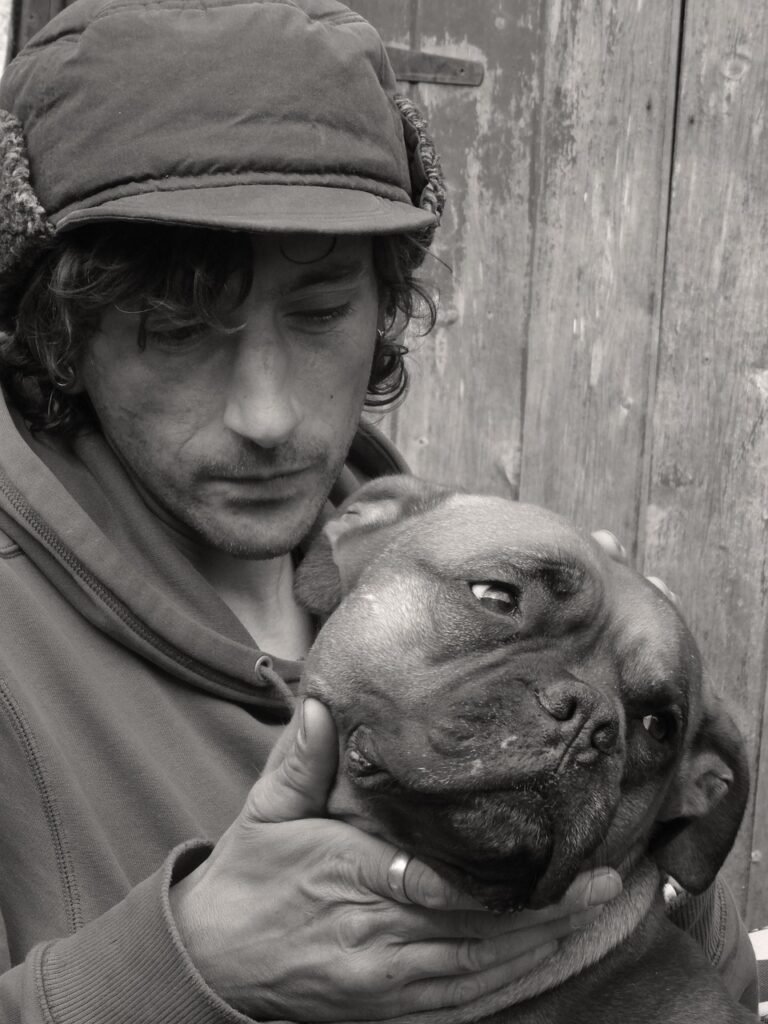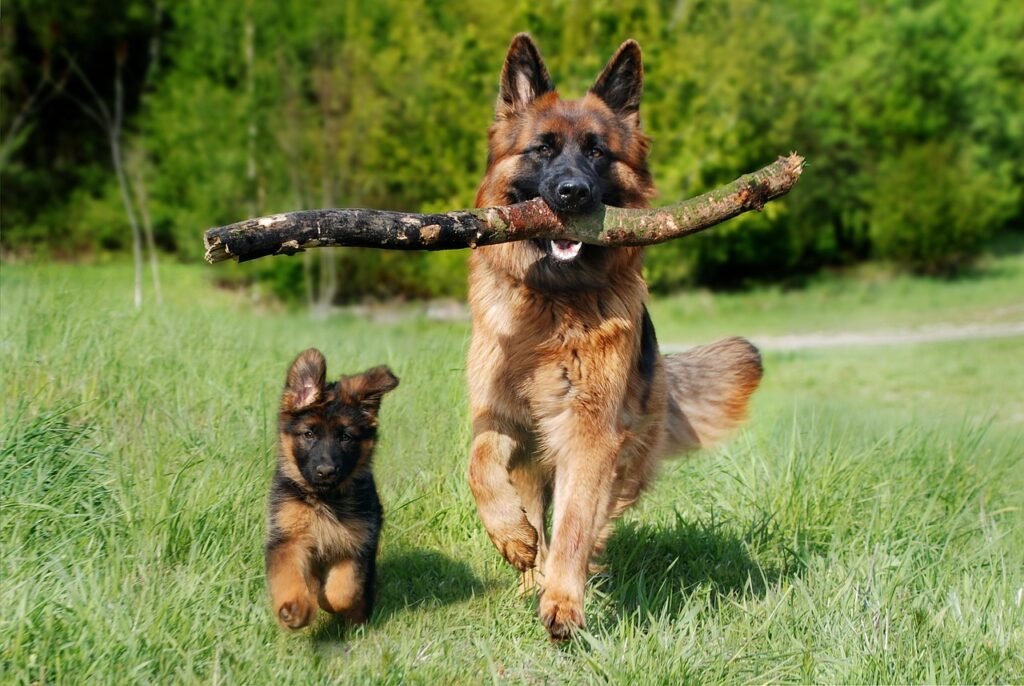Intro
As our beloved canines grow older, they may begin to exhibit subtle signs of aging that can often go unnoticed. Understanding these aging dog symptoms is crucial in providing the best care and support for our senior pets. From physical changes to behavioral shifts, decoding your pet’s silent signals can help you ensure their health and happiness in their golden years.
Recognizing the First Whispers of Age: A Graying Muzzle and Beyond

Witnessing the initial hints of age in our canine companions often starts with the softening shade of their muzzle. This transformation from their youthful color to a dignified gray serves as a tender nudge, signaling a shift into their senior chapters. This visual marker, however, is merely the beginning. As time marches on, your dog may not rush to greet you with the same vigor, and their enthusiasm for long walks might wane, replaced by a preference for shorter, leisurely strolls.
The subtleties of aging extend beyond the coat and into their very posture and gait. You might observe that your dog takes a moment longer to rise from their bed or shows hesitation at stairs they once bounded up effortlessly. These moments are not simply signs of a dog growing older; they’re quiet appeals for attention and care tailored to their evolving needs. It’s a nudge for pet owners to closely monitor their beloved friend’s comfort and mobility, and perhaps, to consider gentle exercises that keep them active without overexertion.
Aged canines might also seek solace in more peaceful environments, showing a newfound appreciation for quiet corners over the hustle and bustle of family life. This shift in preference is a gentle reminder that, just like humans, dogs seek comfort and tranquility as they advance in years. It beckons us to create a serene and accessible living space that respects their changing sensitivities.
Moreover, the onset of age might bring with it a more contemplative demeanor in your dog, where once there was boundless curiosity. This isn’t to say they’ve lost interest in life; rather, they’re experiencing it differently. Observing and engaging with your senior dog in activities suited to their pace not only honors their changing perspective but strengthens the bond you share.
The first whispers of age, then, are not merely signs of a dog’s life well-lived; they are an invitation. An invitation to adapt, to empathize, and to lovingly support our canine companions as they embark on this gentle, golden phase of their journey.
The Telltale Pace: Changes in Activity and Mobility

The quiet adjustment in your dog’s daily routines and movements can speak volumes about their journey through aging. Where once your companion bounded with relentless energy, you may now observe a more measured pace, a contemplation before leaping, or even a reluctance to engage in activities that were once a source of joy. This transformation isn’t merely about getting older; it’s a signal from your dog, indicating a change in their physical comfort and abilities.
Adapting to these shifts requires a blend of observation, empathy, and action. You might notice, for instance, that your dog no longer chases the ball with the same fervor, opting instead for a sniff around the park or a slow meander by your side. This isn’t a loss of interest in play but a change in how they’re able to enjoy it. Consider introducing new forms of gentle exercise that cater to their current mobility level, ensuring they remain active and engaged without overexerting themselves.
Navigating stairs or hopping into the car might also present new challenges for your aging pet. These daily tasks, once performed with ease, may now be sources of anxiety or discomfort for them. Investing in ramps or steps to aid their movement around the house, or into vehicles, can significantly improve their quality of life. It’s about adjusting their environment to match their evolving needs.
In this period of change, your dog’s comfort should be a paramount concern. Paying close attention to how they move and react to physical activities can help you pinpoint areas where they might be experiencing pain or discomfort. Early detection and consultation with a veterinarian can lead to effective management of conditions like arthritis or joint pain, common culprits behind reduced mobility in senior dogs.
Remember, these alterations in activity and mobility aren’t just physical challenges; they’re opportunities. Each adaptation you make for your pet reaffirms your commitment to their happiness and well-being, ensuring that their senior years are filled with as much joy and comfort as possible. In recognizing and responding to these signs, you deepen the bond with your companion, navigating the complexities of aging together with love and understanding.
From Sharp to Subtle: Noticing Shifts in Hearing and Vision

As our canine friends journey into their senior years, their world may gradually become quieter and less distinct. Diminished hearing and vision are common as dogs age, but the signs can be subtle and easy to miss. Your once responsive pet may start showing delayed reactions to verbal commands or even fail to notice when you enter the room. It’s not a disregard for your presence but could be an indication that their hearing isn’t what it used to be.
Similarly, you might observe your dog hesitating before navigating familiar spaces, or clumsily bumping into furniture that they used to glide past with ease. These moments are poignant reminders that their eyesight may be fading, transforming their once vivid world into shades of gray. This sensory decline is a natural part of aging, yet it calls for our patience and understanding as our pets adapt to their changing abilities.
Adjusting to these sensory shifts requires us to communicate with our dogs in new ways. Using more visual signals, like hand gestures, can help in catching their attention when words alone fall short. Creating a safe, navigable living space becomes paramount to prevent injuries and to foster a sense of security in dogs dealing with vision loss. Keeping floors clear of obstacles and maintaining a consistent layout can help your dog map out their environment, relying on memory rather than sight.
Fostering a supportive environment also means protecting your dog from situations that could startle or confuse them, such as unexpected loud noises or the hustle and bustle of unfamiliar places. As their senses dull, they lean on us more for cues about their surroundings, trusting us to guide them through their world safely.
Recognizing and adapting to the changes in your dog’s hearing and vision underscores the depth of your bond. It’s about shifting the way we communicate and interact, ensuring that our aging companions feel understood, safe, and loved. By tuning into these silent signals, we can make their golden years enriching and comfortable, proving that our commitment to their well-being knows no bounds.
The Inner Workings: Understanding Internal Health Shifts

Delving into the internal changes that accompany the aging process in dogs requires a gentle yet vigilant approach. Just as we observe the graying of their muzzles and the slowing of their pace, so too must we attune ourselves to the more silent shifts happening within. These internal health shifts may not be as immediately noticeable but are equally pivotal to the well-being of our senior pets. Diseases such as kidney failure, diabetes, and signs of cognitive decline can sneak up without dramatic warning signs, making it imperative for pet owners to be proactive in their observation and care.
Spotting these changes early can often begin with noticing alterations in their daily habits. A decrease in appetite, for instance, could hint at dental issues or more systemic health problems like kidney disease. Conversely, an increased thirst may be an early indicator of diabetes. These subtle cues call for a closer relationship with your veterinarian, ensuring that regular check-ups and blood tests become a part of your aging dog’s routine. This preventative approach can be instrumental in catching diseases in their nascent stages, offering a better prognosis for your furry friend.
Unexpected weight loss or gain, changes in bathroom habits, or shifts in sleep patterns should all raise gentle alarms. These signs could indicate underlying health concerns that require attention. It’s a reminder that our aging companions rely on us to be their advocates, interpreting signs they cannot verbalize.
In navigating the internal aspects of our dogs’ aging process, it’s crucial to foster an environment of attentive care. This involves not just vigilance over their physical changes but an empathetic understanding of their needs. Providing a diet that’s tailored to their age, with the right balance of nutrients, and considering supplements that support cognitive health can make a significant difference. By embracing this comprehensive approach to elderly dog wellness, we affirm our deep-seated commitment to ensuring their golden years are as healthy and fulfilling as possible.
The Emotional Tapestry: Behavioral Changes in Aging Dogs

Navigating the emotional landscape of an aging dog presents a unique set of challenges and opportunities for deeper connection. As time imprints its mark on our loyal companions, you may notice shifts in their behavior that speak volumes about their internal experience. An increase in anxiety or a newfound clinginess isn’t just a phase; it’s a reflection of their need for reassurance and security as they face the uncertainties of aging. Acknowledging these changes and responding with patience and empathy can fortify the bond between you and your pet, providing them with a stable foundation of love and support during their senior years.
Embracing the new emotional realities of your aging dog also means observing subtler signs of distress or discomfort. A previously outgoing dog becoming irritable or withdrawn could signal underlying discomfort or confusion, underscoring the importance of compassionate care and keen observation. Adapting your home environment to cater to these shifts—like creating quiet retreats and maintaining a routine—can help alleviate stress and foster a sense of normalcy for your aging friend.
Staying attuned to your senior dog’s emotional well-being also opens up avenues for mental enrichment that cater to their current capabilities. Simple puzzles, new scents to explore, and gentle, interactive play can stimulate their mind, helping to counteract the effects of cognitive decline. This mental engagement not only enhances their quality of life but also reinforces the emotional connection you share, reminding them that they are valued and loved.
At the heart of navigating these behavioral changes is the understanding that your aging dog is still the same companion you’ve cherished over the years, albeit with evolving needs. By acknowledging and adjusting to these emotional nuances, you reaffirm your commitment to their happiness and well-being, ensuring that their senior years are filled with the comfort and companionship they’ve always provided you.
Nurturing the Bond: Adjusting Care for Your Aging Companion

As the years gently layer upon our furry friends, the fabric of our care for them naturally requires a thoughtful reshaping. Introducing elements such as dietary supplements specifically tailored to support joint health becomes not just beneficial but essential. These proactive steps help ensure their mobility remains as spry as their spirits, allowing them to navigate their senior years with ease and comfort.
Delving deeper into the realm of physical comfort, the importance of a plush, supportive resting place cannot be overstated. As dogs age, their bodies crave the soft embrace of a bed that cushions their joints and cradles them into restorative slumber. This simple yet profound adjustment in their living space can significantly enhance their quality of life, demonstrating our unwavering dedication to their well-being.
Transitioning into their golden years, our dogs’ dietary needs evolve, mirroring the changes in their metabolism. Adjusting their meals to include foods that are not only palatable but also replete with the nutrients necessary for aging bodies, underscores our commitment to nurturing them from the inside out. It’s about more than just feeding them; it’s about nourishing their aging bodies and souls.
In this season of life, the gift of our time becomes more precious than ever. Engaging in gentle exercise together, exploring new forms of mental stimulation, or simply basking in each other’s company, strengthens the enduring bond we share. It’s a reaffirmation of the joy and companionship we’ve cultivated over the years, ensuring that every moment is imbued with love and mutual respect.
Caring for an aging companion is a journey of love, patience, and understanding. By tailoring our care to meet their changing needs, we envelop them in the comfort and reassurance they deserve, ensuring their twilight years are as enriching and filled with love as those that came before.

